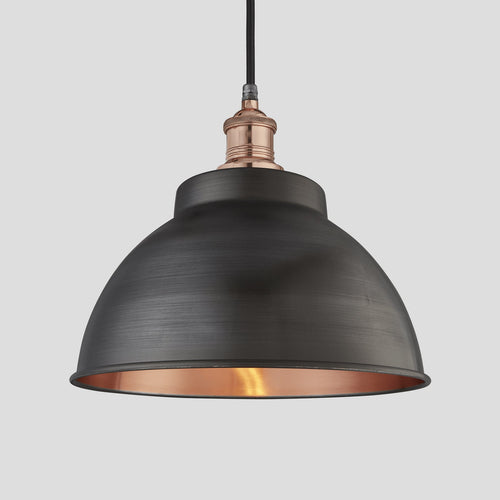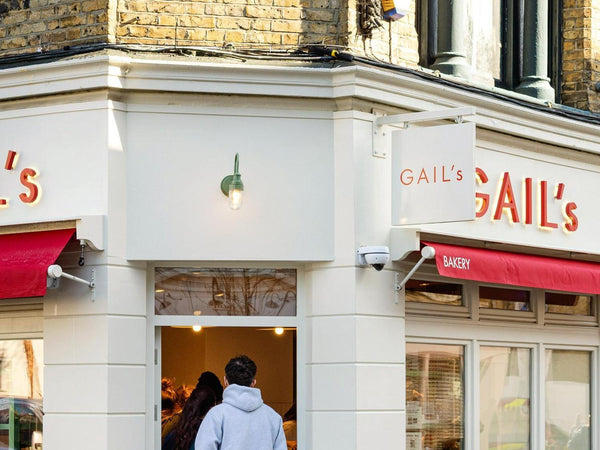Multi-award winning Graduate Gardeners have designed a show garden for this years Royal Horticulture Society Malvern Spring Festival.
We spoke with Mark Draper, Graduate Gardeners designer and project manager, about his journey into garden design and construction, his extensive experience in the industry and his most recent endeavour, the Cotswold Garden.
About the designer: Tell us about your journey into garden design and construction.
Growing up on a farm I was always practical and enjoyed being outside. After guidance from my parents not to go into agriculture, I did look at other career paths like quantity surveying and architecture, but in the end, I decided to go into garden design, so that’s where it all began.
I then trained in general horticulture in Cornwall and then I did a 3 year course in Guildford in design and construction. After this I came to Graduate Gardeners as a site foreman - someone who is responsible for scheduling, coordinating and supervising the work of site operatives.
But design was where I always wanted to go and over the years I’ve had many opportunities to see clients and do design work. I’m coming up to my 32nd year at Graduate Gardeners and I’ve been involved in designing and constructing over 400 gardens of all different shapes and sizes.
No garden has been the same and working in and around the Cotswolds means getting the opportunity to work in all sorts of locations like Oxford, Bath and Cheltenham.
How do you approach each project to ensure it balances your creative flair and your client’s vision?
In garden design, I like strong, architectural lines so that the hard landscape has a real simplicity and boldness to it, contrasting it with lovely soft planting. Layers of planting are key and it creates a lovely space that you want to be part of. I like to layer plants using textures, differing heights, scents and colours, so that they all become one entity. But overall, my style is simple, bold and hard landscaping, mixed with textural planting.
Some clients have strong ideas of what they want and you are led by making something practical and functional with that. But then other clients haven’t really got much of an idea and it’s up to you to try and throw some ideas out.
The Cotswold Garden project.
Celebrating 50 years of designing and building gardens in the Cotswolds, Mark and his team have been commissioned to design and construct The Cotswolds Garden project. Mark said the garden design reflects the idea of gardens being a space of relaxation, family enjoyment and entertaining friends, where careful planting, intricate décor and strategic lighting all come together to create a beautiful design. He wanted it to represent what they do day in and day out and create a story within that.

The Cotswold Garden CAD drawing (Image supplied by Mark Draper, Graduate Gardeners)
How did you ensure that the garden would meet the functional needs of users while maintaining its aesthetic appeal?
We wanted the garden to be a lovely entertaining space for family and friends. So, we’re going to dress the garden, to capture the feel on the intended space. The dining table will be fully laid out with wine glasses, cutlery and plates, so it is ready to come down and enjoy a meal outside. We want to make it as realistic as possible, so if you’ve got a family we want to make sure the patio terrace is big enough to accommodate, so it’s practical to use. So you’ve got to create an idea, but you’ve also got to make sure it works and fulfils the brief.
It's making sure that when you’re designing that you’ve allowed enough physical space and getting a good balance between feeling like you’re sat in a garden whilst getting the proportions right.
We also want to make sure there’s enough lighting on the dining table. There’s a lovely pergola coming out on top of the dining area, almost like an outdoor room and 2 pendants dangled over the table.
What’s your design process?
When we knew what design we wanted to work towards, the cogs started turning and I started to do initial drawings. And once you’ve got a few very crude sketches together of different design details, you can start building up the design to make sure the scale and proportions are right and then it’s just a case of fine tuning that.
For The Cotswold Garden it was a process of fine tuning, making sure all the elements that you’re thinking about are pulled together and not overcomplicating it. You want to avoid putting too many things in place as it can easily become fragmented and you risk losing the initial feel and simplicity of the space.
The whole design process takes at least one month, from all the ideas that go around in my head to the actual design itself. But once I had the initial sketches in place, the design only takes a few days as we use CAD drawings.
.png?v=1711530933089&options=w_768)
The Cotswold Garden CAD drawing (Image supplied by Mark Draper, Graduate Gardeners)
.png?v=1711530939667&options=w_768)
The Cotswold Garden CAD drawing (Image supplied by Mark Draper, Graduate Gardeners)
What’s important to you in your design process?
It’s making sure that you’ve ticked all the boxes of the brief and within the judging criteria that’s important. The quality of plants and the quality of workmanship are the most important elements for us.
As the Malvern show is early, plants can be tricky to get in flower in time, particularly if you have a cold spring. You have to think about potential plant substitutions if things don’t go as planned.
Making sure the workmanship is tip top and planting, are two aspects of my work that are important. Not just the quality of the plants but the arrangement and making sure that you’re thinking about how plants would naturally work together in real life. For example, it is no good planting Lavender next to say a fern, just because it looks nice, each plant requires completely different conditions, the show garden has to be horticulturally correct. So you’ve got to be mindful of your plant knowledge and in the show you can’t get caught putting something together that wouldn’t naturally occur.
Another aspect to bear in mind is costings. You’re also mindful as a designer to create something that’s visually attractive but also making something that’s feasible and economical for your client. You have to have a real awareness of designing, with all the construction details and how it’ll all work together to make something that’s practical, visually aesthetic and affordable.
Sustainable garden design: How do you prioritise sustainability in your designs?
The RHS has honed in on sustainability in recent years and we try to only use things that we can reuse. All the stonewalling can be reused or sent back to the suppliers. And even the plants that get brought in can be used in other gardens. So virtually everything that’s been put in that garden will get reused in some way and there’s little wastage.
There will be some elements of concrete under the paving etc. but that will get separated out at the end of the project and taken to a recycling plant as we want to be as green as we can be - where possible we also try to source all our materials locally.
In other projects, some of our clients are more wildlife friendly, wanted to include various habitats. So we now lay a lot of wildflower meadows and plant a number of native trees and hedgerows. We want to help the biodiversity of the area with wildlife, bees and butterflies, and create habitats for insects – all these aspects come into our designs. It’s lovely to see a lot of clients now are wanting more wildlife friendly elements like wildlife ponds.

The Cotswold Garden CAD drawing (Image supplied by Mark Draper, Graduate Gardeners)

The Cotswold Garden CAD drawing (Image supplied by Mark Draper, Graduate Gardeners)
Lighting in garden design
Marks design process has led to his success in the field. He has designed 4 show gardens, winning 4 golds, 4 best in shows and a People’s Choice Awards. He said that solid workmanship is essential to this success, where dedicated skilled craftsmen are employed to ensure quality work. For the RHS Malvern show, there is specific judging criteria that must be met in order to score excellence. Material choices are an important dimension of RHS’s criteria and to meet this, Mark has chosen various metarials to support elements of the garden and create an aesthetically pleasing look for the space.
In his design, Mark has incorporated a Brooklyn Dome pendant light in pewter and copper over the dining table. He said this helped all visual elements to work together, but also helped the space to work for its supposed purpose – another key element of the marking criteria.
How does lighting play a role in your designs?
We do like feature lighting so that there’s a focal point or something to up-light. It’s nice to focus on certain elements rather than washing everything with light.
Lighting is also key for practicality. We do a lot of step and pathway lighting, and also on zones like the pond or water feature. We try to be selective on what we light up so that there’s only a few highlights.
We chose this specific light fixture because of the twin colours - It’s dark on the outside and brass on the inside. This would work perfectly with the tones around the garden and the different types of stone. We wanted something really stand out against the stone wall when you look at it, that’s why we went with the dark pendant. It’s definitely going to be quite visible from looking into the garden.
Making sure we have quality lighting that is durable is key for us and that’s why we chose outdoor lighting from Industville. The quality and craftsmanship is unmatched and we’d definitely recommend you to our other clients.
Could you share some industry insights regarding current trends or innovations in garden design and construction?
Sustainability is becoming more spoken about in the industry and even in garden design, there’s different types of materials being used to be more sustainable.
As said, clients are favouring the more wild and naturalistic look. There’s a lot more of that going on even with small gardens and amongst families. They’re very keen on creating a feel of habitats and growing your own vegetables. There’s now wildflower turf available which makes it easy to grow wildflowers and native flowers and you only have to cut it down once a year.
We try to make sure our plants are peat free and we avoid astro-turf at all costs. Not only does it get really hot in the summer, but it’s difficult to recycle and reduces biodiversity. In addition to this, we try to be mindful of the footprint in designing and building gardens.
We also do a lot of tree planting as we want to be more sustainable and make sure every garden has a mix of biodiversity.
Are there any outdoor lighting trends to watch out for?
We’re seeing much more lighting that’s on a smart system, which means you can make lighting more zonal and it can also be used for security. This control system can be on the clients phone and is really easy to control the lighting system.
This RHS garden is certainly an exciting project and we’re pleased that our outdoor lighting was the perfect fit for Mark’s vision.
Thank you for sharing your journey in garden design, speaking more about the RHS Malvern garden show and sharing insights into the world of landscaping.
Check out more of Marks work on the Graduate Gardeners' website.







.jpg?v=0&options=w_500)



